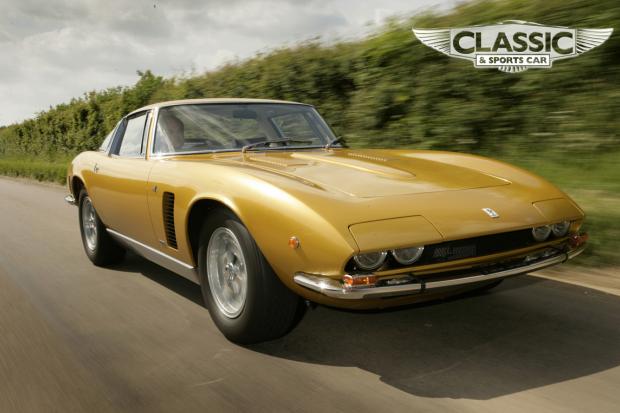“The original carpets had shrunk so I made up new patterns while my son Alex spent ages on the internet trying to find the exact tone and pile to match. Eventually we were happy with a sample from a Dutch specialist but it took another six months to get the carpet which was produced in Australia. The hassle was worth it because the colour, shade and hessian backing are perfect. We lucked out with the carpet edging when Iso specialist Roberto in Bergamo turned up some old stock. We were overjoyed. Malcolm also did a great job with the headlining but sourcing the snakebite Negri material was a challenge. Eventually Axel Gottschalk found a few metres with an original supplier.” The instruments were sent to Adrian Sidwell in Dorset who cleaned and checked them. Twitchell also found a ’67 Radiomobile from an E-type. All were then fitted up to the new dash.
When restoring any bespoke Italian car, it helps to know where the original parts were sourced from. To keep costs down Iso used an extensive range including Alfa, Lancia and Fiat 850 Spider parts and Twitchell knows them all: “I produced a book about Iso interchangeability which I’ve made available to the club. It helps when you’re searching around scrapyards.”

In 2005, after 31 years off the road, the Grifo started to come together. Heyward and Scott made up the tubular manifold and exhaust, and Docking Engineering fabricated a new ally radiator. Says Twitchell: “After all those aches and pains from working on the car, I was determined to enjoy driving it, so mechanically it had to be right. I fitted silicone hosing with aluminium tubes and even designed my own expansion tank. Twin Kenlowes help keep it cool. The aircon never worked so that, together with the hideous Deco Remi alternator, was thrown away.” Twitchell tends towards purism, but he can’t tolerate items that don’t work or are badly made. As well as making new brackets to reposition a new smaller alternator on the opposite side of the engine, he redesigned the crude mounts for the power steering pump. The beautifully made hand-throttle linkage, with universal joints from a model boat propshaft, and the spring loading for the fuel filler cap are typical of Twitchell’s attention to detail: “Iso build quality is variable. Some things are superb such as the bumpers, which would have taken hours of finishing and polishing, while other parts are rubbish and thrown together. Some of the welding is poor and sections are trimmed with tin snips until they fit. Often they’re not even ground off. The extreme standards are frustrating.”

The Grifo S2 made its post-retoration debut run to Italian Car Day at Brooklands last May where it was the talk of the event. Twitchell was then invited to show it at the Le Mans Classic on the French Iso club stand, and relished the drive out to La Sarthe. He then rounded off the summer by scooping the ‘Best of Show’ award at Italian Car Day at Stanford Hall.












